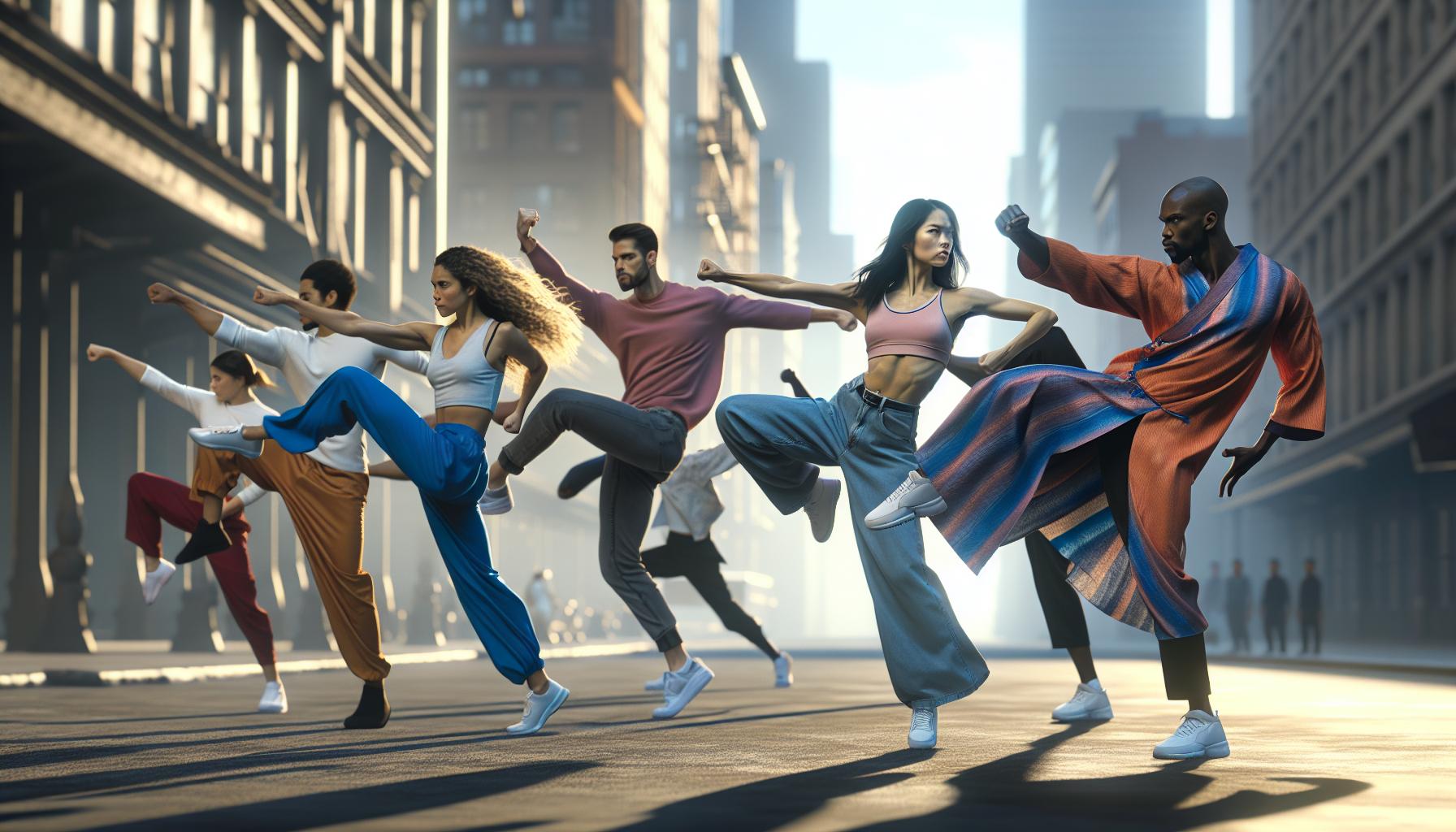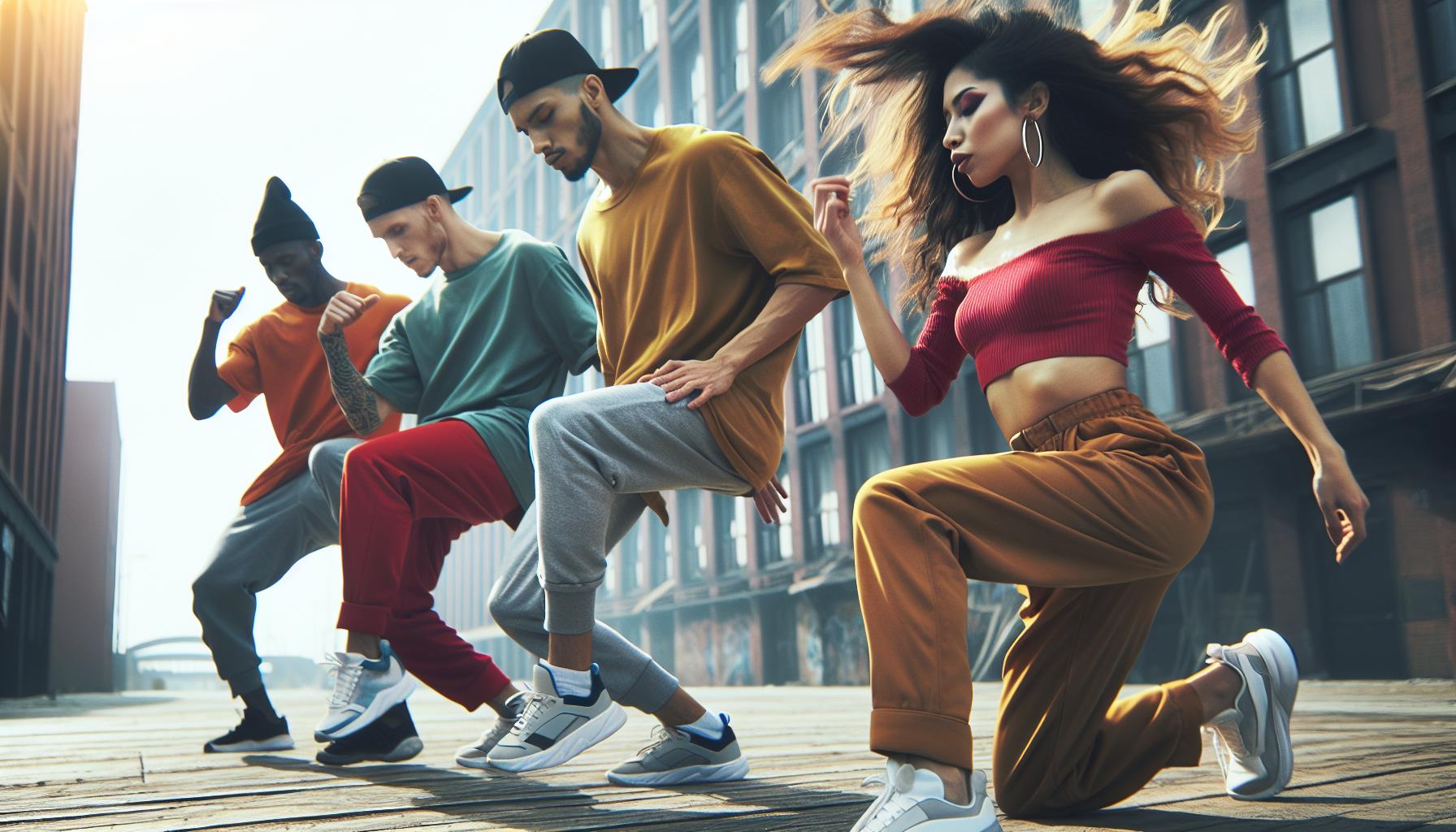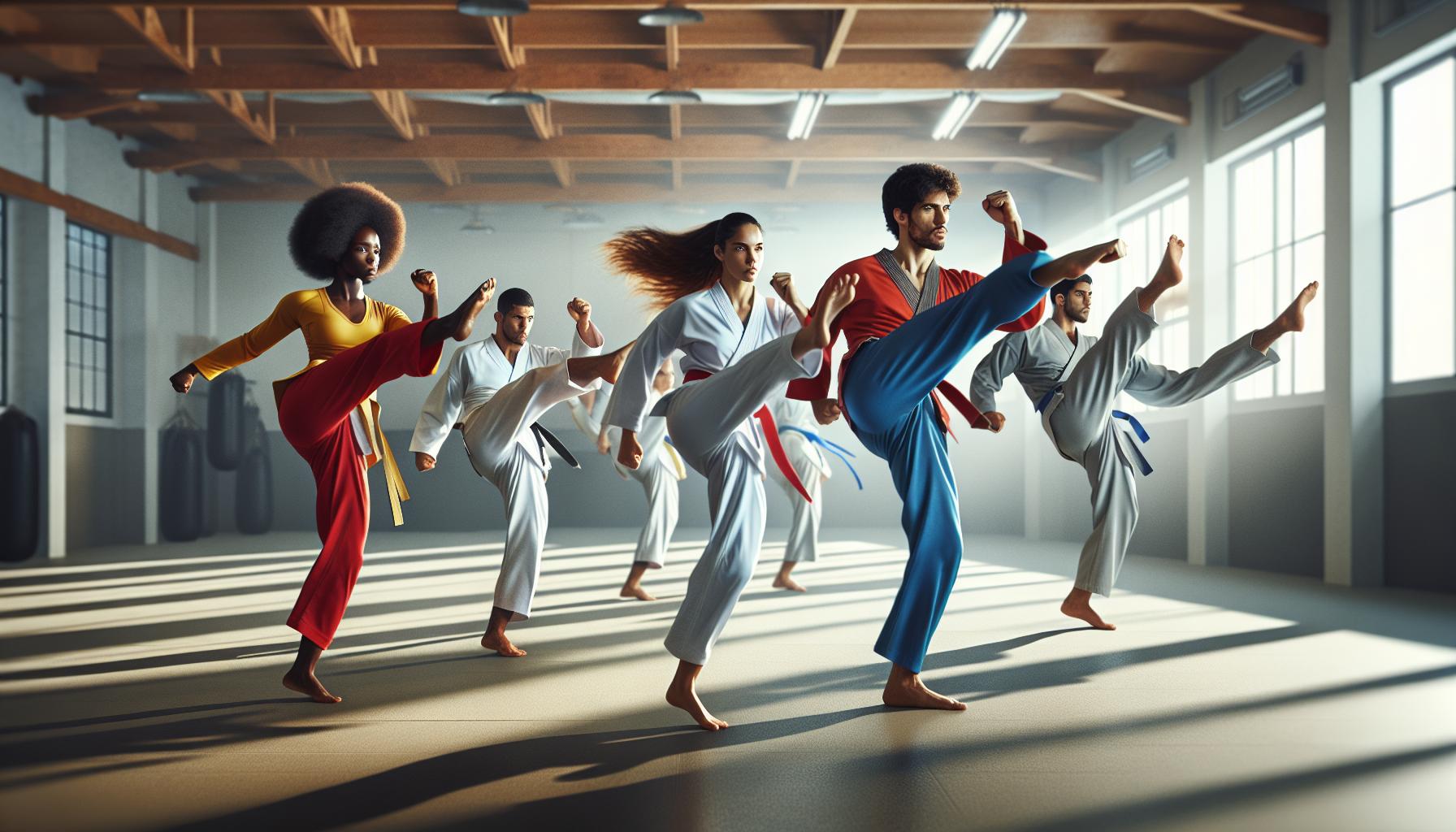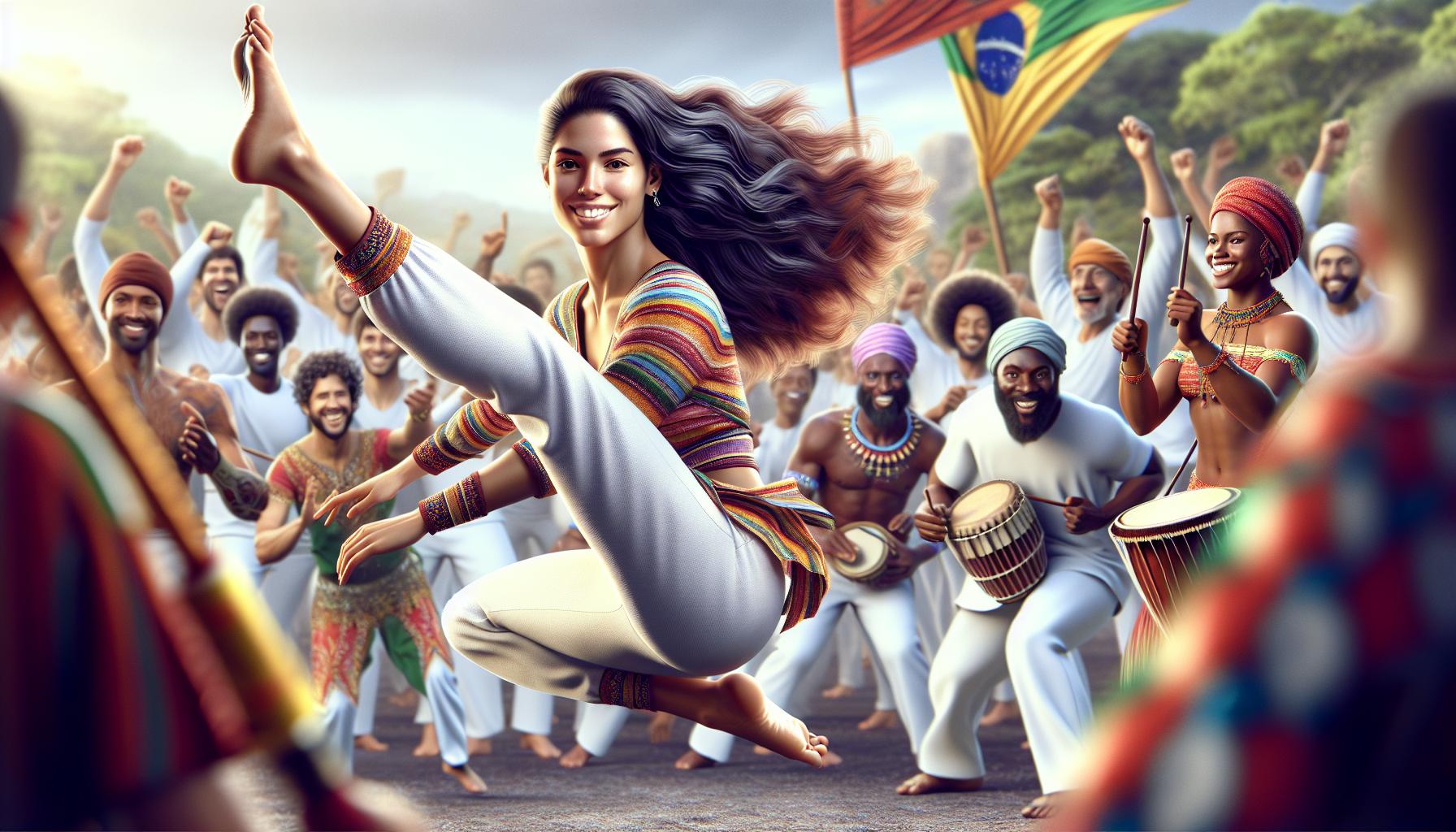Dance martial arts combine the grace of dance with the discipline of martial arts, creating a unique and powerful form of expression. I’ve always been fascinated by how these two worlds intersect, blending rhythm and strength in a way that captivates both the body and mind. Whether it’s the fluid movements of capoeira or the precise strikes of taekwondo, each style offers a fresh perspective on movement and self-defense.
As I delve deeper into this intriguing fusion, I realize it’s not just about physical prowess. It’s about building confidence, enhancing coordination, and discovering a new way to connect with oneself and others. Join me as I explore the vibrant world of dance martial arts, uncovering its benefits, techniques, and the passionate community that thrives within it.
Key Takeaways
- Unique Fusion: Dance martial arts blend the grace of dance with the discipline of martial arts, offering a powerful means of self-expression and movement.
- Physical and Mental Benefits: Practicing dance martial arts enhances physical fitness, coordination, and strength while also boosting mental well-being and self-confidence.
- Cultural Significance: The history of dance martial arts is rich, rooted in diverse cultural traditions that emphasize community, celebration, and resistance.
- Diverse Styles: Popular dance martial arts styles such as capoeira, krumping, and ballet combat each bring their own unique elements, appealing to various audiences and fitness goals.
- Community Connection: Engaging in dance martial arts fosters camaraderie and social bonds, contributing to a vibrant and supportive community for practitioners.
Overview Of Dance Martial Arts
Dance martial arts blend athleticism with artistic expression, creating a dynamic experience for practitioners. This unique combination allows individuals to explore their physicality in diverse ways, enhancing both martial techniques and dance movements.
Styles like capoeira integrate intricate body movements with rhythm, emphasizing flexibility and agility. Practitioners often engage in powerful kicks, fluid spins, and acrobatic feats, showcasing their strength and creativity. Similarly, taekwondo incorporates dance elements through its emphasis on kicks and forms, allowing individuals to express emotions through powerful, choreographed sequences.
The benefits of dance martial arts extend beyond physical fitness. Practicing these arts fosters mental discipline, increases confidence, and develops social skills. Engaging in communal training often builds camaraderie and support among individuals, creating a vibrant community. Whether you’re practicing in a studio or performing at an event, the experience is enhanced by the gear you wear, such as custom screen printed t shirts that showcase your style and team spirit.
Overall, dance martial arts provide a multifaceted approach to fitness and self-expression, intertwining the rigors of martial arts with the fluidity of dance.
History Of Dance Martial Arts

Dance martial arts possess a rich history that intertwines cultural traditions and physical practices. My exploration into this fusion reveals its ancient roots and the evolution of movements across different societies.
Ancient Roots
Dance martial arts trace their origins to diverse cultures where movement played a crucial role in celebrations and rituals. Capoeira, for example, originated in Brazil during the 16th century, combining African dance, music, and fighting techniques as a means of resistance against oppression. Similarly, traditional Chinese martial arts encompass forms like Wu Shu, which incorporate dance-like movements to cultivate spiritual awareness and physical prowess. These ancient practices emphasized not only combat skills but also community bonding and cultural expression.
Evolution Over Time
The evolution of dance martial arts reflects changing societal values and global influences. Throughout the 20th century, disciplines such as breakdancing emerged, integrating elements of urban culture with martial arts principles. Taekwondo, which developed in Korea, evolved from traditional martial practices into a highly stylized sport, further combining kicks and forms with rhythmic elements akin to dance. Contemporary forms of dance martial arts continue to adapt, incorporating influences from various dance styles while focusing on self-expression, fitness, and competitive spirit, making these practices accessible to a broader audience.
Popular Styles Of Dance Martial Arts

Various styles of dance martial arts showcase the unique blend of rhythm, creativity, and combat techniques. Each style offers distinct benefits and appeal to different audiences.
Capoeira
Capoeira combines acrobatic movements, dance, and music, originating in Brazil during the 16th century. It’s characterized by fluid, continuous motion and involves complex kicks, spins, and ground movements. Participants engage in a playful exchange called a “jogo,” typically surrounded by traditional music played on instruments like the berimbau. Capoeira promotes strength, flexibility, and agility while fostering a strong sense of community and cultural identity among practitioners.
Krumping
Krumping emphasizes expressive, energetic, and exaggerated movements. Originating from the streets of Los Angeles in the early 2000s, this style focuses on powerful gestures, rapid movements, and spontaneous improvisation. Krumping acts as an emotional outlet, often reflecting personal experiences and struggles. Practitioners enhance their cardiovascular fitness, coordination, and self-expression while building resilience and confidence through this high-energy form of dance martial arts.
Ballet Combat
Ballet combat unites traditional ballet techniques with martial arts principles. This innovative style incorporates classical dance’s grace and precision while emphasizing self-defense techniques and physical conditioning. Practitioners learn to execute ballet’s intricate movements while maintaining a strong base in martial arts. Ballet combat develops core strength, flexibility, and balance while instilling discipline and focus in its participants. Its unique blend appeals to those seeking both artistic expression and practical self-defense skills.
Benefits Of Practicing Dance Martial Arts

Practicing dance martial arts provides a wealth of benefits that extend beyond just physical abilities. I can confidently say that both physical fitness and mental well-being flourishes through this unique art form.
Physical Fitness
Engaging in dance martial arts boosts overall physical fitness in several ways. Practitioners experience improved cardiovascular endurance due to the high-energy movements involved in styles like capoeira and taekwondo. Strength and flexibility increase as routines incorporate dynamic movements, such as kicks and leaps. Coordination improves through repetitive practice of intricate sequences, making body control more refined. Balance develops significantly as I learn to transition smoothly between dance and martial arts techniques. An increase in agility complements these benefits, resulting in quick reflexes and enhanced movement efficiency.
Mental Well-being
Dance martial arts profoundly impacts mental well-being, cultivating a focused and disciplined mindset. Practicing these forms helps reduce stress by providing an outlet for emotions through movement. I experience improved mood and self-esteem, stemming from the achievement of mastering complex techniques. Social connections formed within classes contribute to a sense of belonging, further enhancing emotional health. Additionally, mental acuity sharpens as I concentrate on choreography and combat strategies, fostering greater cognitive functions. Ultimately, dance martial arts create a holistic experience that nurtures both mind and body.
Conclusion
Dance martial arts offer a unique blend of physicality and artistry that captivates both the body and mind. I’ve seen firsthand how these practices foster not just fitness but also a profound sense of community and self-expression. Each style brings its own flavor and benefits, allowing practitioners to explore their creativity while building strength and confidence.
As I continue my journey in dance martial arts, I encourage you to dive into this vibrant world. Whether you’re looking to improve your physical fitness or simply want to express yourself through movement, there’s a place for you in this dynamic fusion of dance and martial arts. Embrace the rhythm and strength that dance martial arts have to offer, and discover the transformative power they hold.

